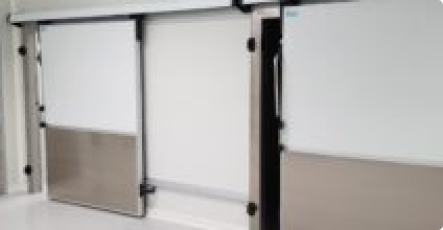Next day delivery
available
January 2, 2024 | MTCSS

Common Cold Room Problems – How Do You Fix Them? Cold rooms are an incredibly useful temperature-controlled solution for many businesses; however, your cold room is only as good as…
Cold rooms, such as walk-in fridge and freezers, are essentially the same as a domestic fridge – just bigger and more powerful! A well-organised cold room can be just as efficient, hygienic, and easy to use as a domestic fridge, improving cold room processes for your business.
Your cold rooms should therefore be well organised to prevent a messy, unhygienic area where the chances of contamination, accidents or overstocking become prevalent. The most efficient way to achieve this is to invest in cold room shelving – an essential component in your cold rooms.
So, how do you start to plan your cold room shelving? Our experts are here to help!
It’s important to plan your cold room shelving design because it helps to visualise which shelving solutions would best benefit your cold room.
Planning your cold room shelving also helps you to understand how much space needs to be considered. You should allow enough space for both storage (shelves) and space for your employees to walk in/around your cold room with ease.
Well-placed, sturdy cold room shelves are beneficial because they:
Planning your cold room shelving solutions may seem complicated, but the experts at MTCSS are here to help break it down…
Step 1: Decide on the layout of your cold room shelving
Most cold rooms use large freestanding shelves, also called racking, that wrap around the perimeter of the cold room – leaving the middle free for employees to stand in.
These cold room shelves ensure goods are easily accessible and storage space is maximised and would benefit industries that have frequent stock movement within cold rooms.
Some cold room shelving solutions can be personalised, however, so you can choose what shape they will be. For example, you can often choose from straight shelves only with no corner shelves, or in L or T-shaped configurations to ensure all available storage space is used.
But you should make sure you consider what products you will be storing in your cold room, as this will affect the layout and shelf types you can choose:
Step 2: Choose long-lasting cold room shelves
A cold room is a harsh environment and factors like food acids, moisture and general usage can cause shelving to rust or break down – requiring replacement further down the line.
To minimise this, you should choose a cold room shelving solution that is made from high-quality materials, such as PVC, anodised aluminium, fibreglass, and resin composite materials – which are resistant to wear and strong enough to support your products for years to come.
Read our blog article here to learn more about the different types of cold room shelving.
Step 3: Prioritise airflow
Open-wire shelves allow for adequate air circulation, which keeps goods at the right temperature and in the best condition possible, even when sat within fully stocked shelves.
You should try to leave a 3–6-inch gap between the shelving and the cold room wall to ensure air circulation is not compromised and to stop hotspots from developing – which can cause the stock to become heated and spoil.
Step 4: Ensure cold room shelves are strong enough
Cold room shelving units come with advertised weight capacities – only storing goods within this capacity range can help your shelves last longer.
This is especially relevant if you’re storing large quantities of heavier foods, ice for sculptures, or buckets of water to stand flowers in. Ensuring the shelves you choose can withstand your product weights is incredibly important and is a part of the planning process that should never be overlooked.
Step 5: Choose between rigid and moveable cold room shelves
Some shelving comes with castor wheels which means orientations can be rearranged quickly and easily depending on your business requirements.
This can be useful for situations in which stock changes seasonally, like with food or flowers, or if businesses are events-based, as moveable shelves can help to segregate goods for specific orders.
However, businesses may choose to invest in rigid shelves compared to shelves with wheels on for a more secure, stable shelving solution. This would be the perfect solution if you don’t need to move your shelving around or access any products from the back or sides of your shelving – it’s entirely dependent on your requirements!
Step 6: Label and section cold room shelves
If your business stores food products in your cold rooms, then the sectioning and labelling of your cold room shelving can help to prevent cross-contamination and keep high-risk foods away from low-risk foods, which is especially important within food & drink industries.
However, for businesses that store lots of similar products, clearly labelling and organising your shelving solutions can help staff to pack orders without error.
Labelling your cold room shelves also makes restocking easier overall and reduces the amount of time required to spend within your cold room! Try to use labels that will not rub off (EG, dry wipe marker, etc..) or peel off if they get wet during leaks, spills, or cleaning.
A well-organised cold room with cold room shelving solutions helps to keep your goods accessible and protected and ensures stock is rotated well to avoid waste.
January 2, 2024 | MCTSS